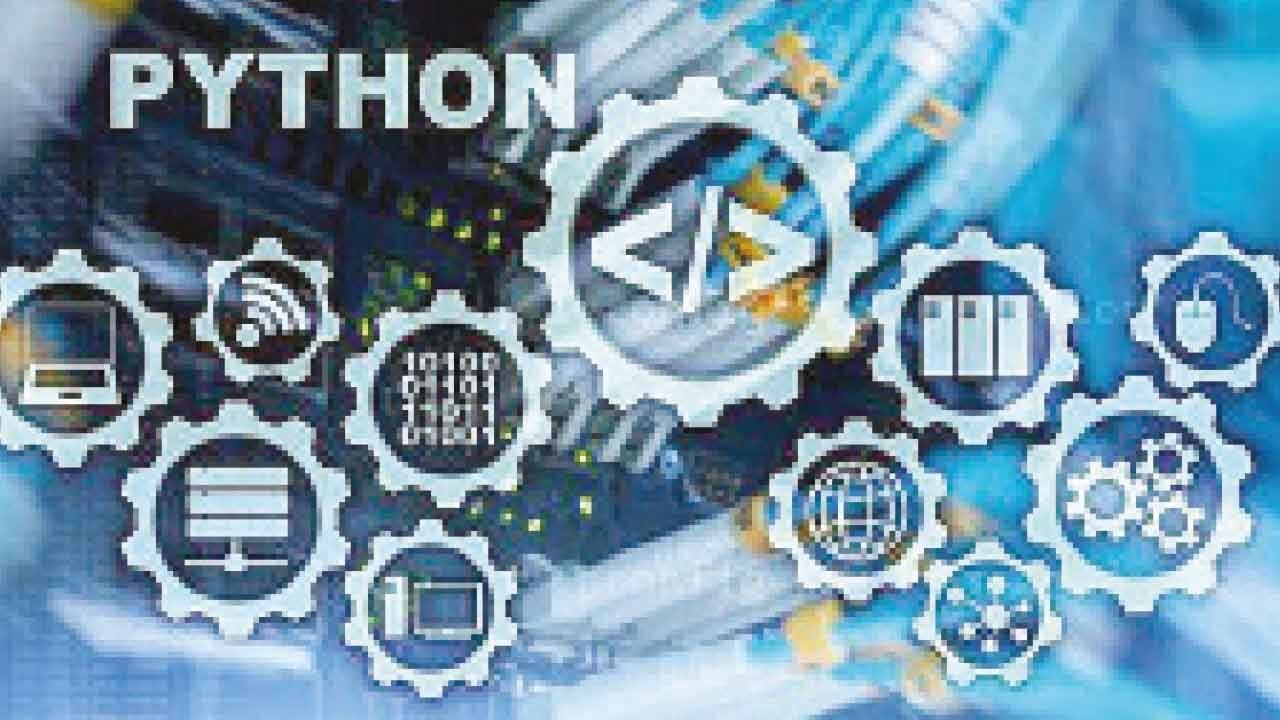AI Research
Myths of AI networking — debunked

As AI infrastructure scales at an unprecedented rate, a number of outdated assumptions keep resurfacing – especially when it comes to the role of networking in large-scale training and inference systems. Many of these myths are rooted in technologies that worked well for small clusters. But today’s systems are scaling to hundreds of thousands – and soon, millions – of GPUs. Those older models no longer apply. Let’s walk through some of the most common myths – and why Ethernet has clearly emerged as the foundation for modern AI networking.
Myth 1: You cannot use Ethernet for high performance AI networks
This myth has already been busted. Ethernet is now the de facto networking technology for AI at scale. Most, if not all, of the largest GPU clusters deployed in the past year have used Ethernet for scale-out networking.
Ethernet delivers performance that matches or exceeds what alternatives like InfiniBand offer – while providing a stronger ecosystem, broader vendor support, and faster innovation cycles. InfiniBand, for example, wasn’t designed for today’s scale. It’s a legacy fabric being pushed beyond its original purpose.
Meanwhile, Ethernet is thriving: multiple vendors are shipping 51.2T switches, and Broadcom recently introduced Tomahawk 6, the industry’s first 102.4T switch. Ecosystems for optical and electrical interconnect are also mature, and clusters of 100K GPUs and beyond are now routinely built on Ethernet.
Myth 2: You need separate networks for scale-up and scale-out
This was acceptable when GPU nodes were small. Legacy scale-up links originated in an era when connecting two or four GPUs was enough. Today, scale-up domains are expanding rapidly. You’re no longer connecting four GPUs – you’re designing systems with 64, 128, or more in a single scale-up cluster. And that’s where Ethernet, with its proven scalability, becomes the obvious choice.
Using separate technologies for local and cluster-wide interconnect only adds cost, complexity, and risk. What you want is the opposite: a single, unified network that supports both. That’s exactly what Ethernet delivers – along with interface fungibility, simplified operations, and an open ecosystem.
To accelerate this interface convergence, we’ve contributed the Scale-Up Ethernet (SUE) framework to the Open Compute Project, helping the industry standardize around a single AI networking fabric.
Myth 3: You need proprietary interconnects and exotic optics
This is another holdover from a different era. Proprietary interconnects and tightly coupled optics may have worked for small, fixed systems – but today’s AI networks demand flexibility and openness.
Ethernet gives you options: third-generation co-packaged optics (CPO), module-based retimed optics, linear drive optics, and the longest-reach passive copper. You’re not locked into one solution. You can tailor your interconnect to your power, performance, and economic goals – with full ecosystem support.
Myth 4: You need proprietary NIC features for AI workloads
Some AI networks rely on programmable, high-power NICs to support features like congestion control or traffic spraying. But in many cases, that’s just masking limitations in the switching fabric.
Modern Ethernet switches – like Tomahawk 5 & 6 – integrate load balancing, rich telemetry, and failure resiliency directly into the switch. That reduces cost, lowers power, and frees up power for what matters most: your GPUs/ XPUs.
Looking ahead, the trend is clear: NIC functions will increasingly be embedded into XPUs. The smarter strategy is to simplify, not over-engineer.
Myth 5: You have to match your network to your GPU vendor
There’s no good reason for this. The most advanced GPU clusters in the world – deployed at the largest hyperscalers – run on Ethernet.
Why? Because it enables flatter, more efficient network topologies. It’s vendor-neutral. And it supports innovation – from AI-optimized collective libraries to workload-specific tuning at both the scale-up and scale-out levels.
Ethernet is a standards-based, well understood technology with a very vibrant ecosystem of partners. This allows AI clusters to scale more easily, and completely decoupled from the choice of GPU/XPU, delivering an open, scalable and power efficient system
The bottom line
Networking used to be an afterthought. Now it’s a strategic enabler of AI performance, efficiency, and scalability.
If your architecture is still built around assumptions from five years ago, it’s time to rethink them. The future of AI is being built on Ethernet – and that future is already here.
Click here to explore more about Ethernet technology and here to learn more about Merchant Silicon.
About Ram Velaga
Broadcom
Ram Velaga is Senior Vice President and General Manager of the Core Switching Group at Broadcom, responsible for the company’s extensive Ethernet switch portfolio serving broad markets including the service provider, data center and enterprise segments. Prior to joining Broadcom in 2012, he served in a variety of product management roles at Cisco Systems, including Vice President of Product Management for the Data Center Technology Group. Mr. Velaga earned an M.S. in Industrial Engineering from Penn State University and an M.B.A. from Cornell University. Mr. Velaga holds patents in communications and virtual infrastructure.
AI Research
How to Scale Up AI in Government

State and local governments are experimenting with artificial intelligence but lack systematic approaches to scale these efforts effectively and integrate AI into government operations. Instead, efforts have been piecemeal and slow, leaving many practitioners struggling to keep up with the ever-evolving uses of AI for transforming governance and policy implementation.
While some state and local governments are leading in implementing the technology, AI adoption remains fragmented. Last year, some 150 state bills were considered relating to the government use of AI, governors in 10 states issued executive orders supporting the study of AI for use in government operations, and 10 legislatures tasked agencies with capturing comprehensive inventories.
Taking advantage of the opportunity presented by AI is critical as decision-makers face an increasing slate of challenging implementation problems and as technology quickly evolves and develops new capabilities. The use of AI is not without risks. Developing and adapting the necessary checks and guidance is critical but can be challenging for such dynamic technologies. Shifting from seeing AI as merely a technical capability to considering what AI technology should be asked to do can help state and local governments think more creatively and strategically. Here are some of the benefits governments are already exploring:
Administrative efficiency: Half of all states are using AI chatbots to reduce administrative burden and free staff for substantive and creative work. The Indiana General Assembly uses chatbots to answer questions about regulations and statutes. Austin, Texas, streamlines residential construction permitting with AI, while Vermont’s transportation agency inventories road signs and assesses pavement quality.
Research synthesis: AI tools help policymakers quickly access evolving best practices and evidence-based approaches. Overton’s AI platform, for example, allows policymakers to identify how existing evidence aligns with priority areas, compare policy approaches across states and nations, and match with relevant researchers and projects.
Implementation monitoring: AI fills critical gaps in program evaluation without major new investments. California’s transportation department analyzes traffic patterns to optimize highway safety and inform infrastructure investments.
Predictive modeling: AI-enabled models help test assumptions about which interventions will succeed. These models use features such as organizational characteristics, physical and contextual factors, and historical implementation data to predict success of policy interventions, and their outputs can help tailor interventions and improve outcomes and success. Applications include targeting health interventions to patients with modifiable risk factors, identifying lead service lines in municipal water systems, predicting flood response needs and flagging households at eviction risk.
Scaling up to wider adoption in policy and practice requires proactive steps by state and local governments and attendant guidance, monitoring and evaluation:
Adaptive policy framework: AI adoption often outpaces planning, and the definition of AI is often specific to its application. States need to define AI applications by sector (health, transportation, etc.) and develop adaptive operating strategies to guide and assess its impact. Thirty states have some guidance, but comprehensive approaches require clear definitions and inventories of current use.
Funding strategies: Policymakers must identify and leverage funding streams to cover the costs of procurement and training. Federal grants like the State and Local Cybersecurity Grant Program offer potential, though current authorization expires this Sept. 30. Massachusetts’ FutureTech Act exemplifies direct state investment, authorizing $1.23 billion for IT capital projects including AI.
Smart procurement: Effective AI procurement requires partnerships with vendors and suppliers and between chief information officers and procurement specialists. Contracts must ensure ethical use, performance monitoring and continuous improvement, but few states have procurement language related to AI. Speed matters — AI purchases risk obsolescence during lengthy procurement cycles.
Training and workforce development: Both current and future state and local government workforces need AI skills. Solutions include AI training academies and literacy programs for government workers, joint training programs between professional associations, and the General Services Administration’s AI Community of Practice‘s events and training. The Partnership for Public Service has recently opened up its AI Government Leadership program to state and local policymakers. Universities including Stanford and Michigan offer specialized programs for policymakers. Graduate programs in public policy, administration and law should incorporate AI governance tracks.
State AI policy development involves governor’s offices, chief information offices, security offices and legislatures. But success requires moving beyond pilot projects to systematic implementation. Governments that embrace this transition will be best positioned for future challenges. The opportunity exists now to set standards for AI-enabled governance, but it requires proactive steps in policy development, funding, procurement, workforce development and safeguards.
Joie Acosta is a senior behavioral scientist and the Global Scholar in Translation at RAND, a nonprofit, nonpartisan research institute. Sara Hughes is a senior policy researcher and the Global Scholar of Implementation at RAND and a professor of policy analysis at the RAND School of Public Policy.
Governing’s opinion columns reflect the views of their authors and not necessarily those of Governing’s editors or management.
AI Research
AI-powered search engine to help Singapore lawyers with legal research

SINGAPORE – An artificial intelligence (AI)-powered search engine is expected to accelerate legal research and free up time for more than three quarters of all lawyers working in Singapore who subscribe to legal research platform LawNet.
Developed in collaboration with the Singapore Academy of Law, this new tool allows lawyers to ask legal research questions in natural language and receive contextual, relevant responses.
It is trained on Singapore’s legal context and supported by data such as judgments, Singapore Law Reports, legislation and books.
GPT-Legal Q&A, which has been rolled out on LawNet, was launched by Justice Kwek Mean Luck on the second day of the TechLaw.Fest on Sept 11 at the Sands Expo and Convention Centre.
The earlier GPT-Legal model launched in 2024 provided summaries of unreported court judgments, and has since been used to generate more than 15,000 of them.
“This is a game-changing feature. This new function enables lawyers to ask legal research questions in natural language, and receive contextual, relevant responses, which are generated by AI grounded in LawNet’s content,” said Justice Kwek.
“It is designed to complement traditional keyword-based search by offering a more intuitive and responsive research experience.”
For a start, the feature is focused on delivering insights on contract law, as it is a fundamental area of law that underpins many specialised fields.
“This is a significant undertaking. It involves extensive development and rigorous testing, to align technology to the demands of your work. As such, we will be rolling out this implementation in phases,” said Justice Kwek.
The model will be improved to give insights into other significant areas of law like family law and criminal law.
The Infocomm Media Development Authority has also developed an agentic AI demonstrator for the Singapore Academy of Law to help corporate secretaries arrange annual general meetings (AGMs).
Agentic AI can help to perform tasks without the need for human intervention.
The AI agent can automate tasks like looking through the schedules of directors to find a time slot for AGMs.
With the AI agent offering routine corporate secretarial duties autonomously, professionals will be freed up to focus on higher-value advisory and strategic tasks.
Source: The Straits Times © SPH Media Limited. Permission required for reproduction
AI Research
AI-powered research training to begin at IPE for social science scholars

Hyderabad: The Institute of Public Enterprise (IPE), Hyderabad, has launched a pioneering 10-day Research Methodology Course (RMC) focused on the application of Artificial Intelligence (AI) tools in social science research. Sponsored by the Indian Council of Social Science Research (ICSSR), Ministry of Education, Government of India, the program commenced on October 6 and will run through October 16, 2025, at the IPE campus in Osmania University.
Designed exclusively for M.Phil., Ph.D., and Post-Doctoral researchers across social science disciplines, the course aims to equip young scholars with cutting-edge AI and Machine Learning (ML) skills to enhance research quality, ethical compliance, and interdisciplinary collaboration. The initiative is part of ICSSR’s Training and Capacity Building (TCB) programme and is offered free of cost, with travel and daily allowances reimbursed as per eligibility.
The course is being organized by IPE’s Centre for Data Science and Artificial Intelligence (CDSAI), under the academic leadership of Prof. S Sreenivasa Murthy, Director of IPE and Vice-Chairman of AIMS Telangana Chapter. Dr. Shaheen, Associate Professor of Information Technology & Analytics, serves as the Course Director, while Dr. Sagyan Sagarika Mohanty, Assistant Professor of Marketing, is the Co-Director.
Participants will undergo hands-on training in Python, R, Tableau, and Power BI, alongside modules on Natural Language Processing (NLP), supervised and unsupervised learning, and ethical frameworks such as the Digital Personal Data Protection (DPDP) Act, 2023.
The curriculum also includes field visits to policy labs like T-Hub and NIRDPR, mentorship for research proposal refinement, and guidance on publishing in Scopus and ABDC-indexed journals.
Speaking about the program, Dr. Shaheen emphasized the need for social scientists to evolve beyond traditional methods and embrace computational tools for data-driven insights.
“This course bridges the gap between conventional research and emerging technologies, empowering scholars to produce impactful, ethical, and future-ready research,” she said.
Seats for the course are allocated on a first-come, first-served basis. The last date for nominations is September 15, 2025. With its unique blend of technical training, ethical grounding, and publication support, the RMC at IPE intends to take a significant step to empower scholars in the process of modernizing social science research in India.
Interested candidates can contact: Dr Shaheen, Programme Director, at [email protected] or on mobile number 9866666620.
-

 Business2 weeks ago
Business2 weeks agoThe Guardian view on Trump and the Fed: independence is no substitute for accountability | Editorial
-
Tools & Platforms4 weeks ago
Building Trust in Military AI Starts with Opening the Black Box – War on the Rocks
-

 Ethics & Policy2 months ago
Ethics & Policy2 months agoSDAIA Supports Saudi Arabia’s Leadership in Shaping Global AI Ethics, Policy, and Research – وكالة الأنباء السعودية
-

 Events & Conferences4 months ago
Events & Conferences4 months agoJourney to 1000 models: Scaling Instagram’s recommendation system
-

 Jobs & Careers2 months ago
Jobs & Careers2 months agoMumbai-based Perplexity Alternative Has 60k+ Users Without Funding
-

 Education2 months ago
Education2 months agoVEX Robotics launches AI-powered classroom robotics system
-

 Podcasts & Talks2 months ago
Podcasts & Talks2 months agoHappy 4th of July! 🎆 Made with Veo 3 in Gemini
-

 Education2 months ago
Education2 months agoMacron says UK and France have duty to tackle illegal migration ‘with humanity, solidarity and firmness’ – UK politics live | Politics
-

 Funding & Business2 months ago
Funding & Business2 months agoKayak and Expedia race to build AI travel agents that turn social posts into itineraries
-

 Podcasts & Talks2 months ago
Podcasts & Talks2 months agoOpenAI 🤝 @teamganassi

